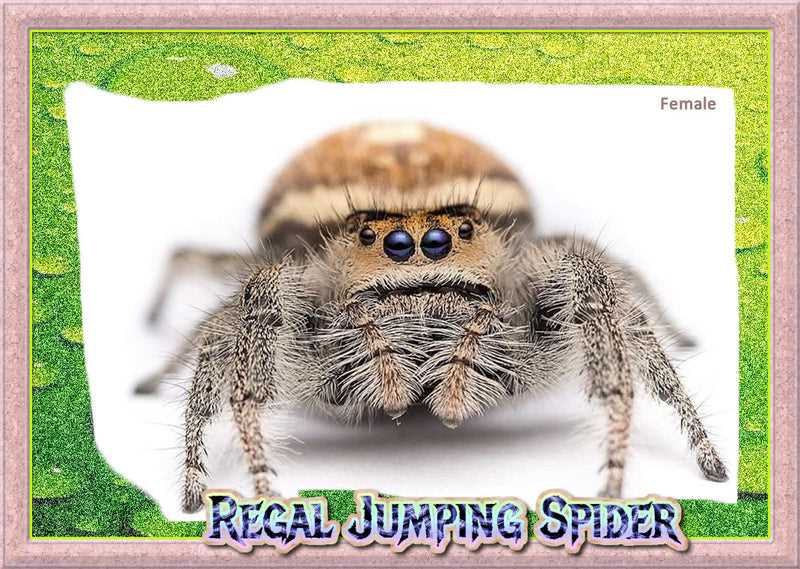
The jumping spider is a fascinating species of spider known for its incredible agility and acrobatic abilities. Among them, the female regal jumping spider stands out with its stunning appearance and remarkable behavior.
But it’s not just the spider’s appearance that makes it fascinating. The female regal jumping spider is an incredibly skilled predator, using its exceptional jumping ability to pounce on its prey with precision and speed. Their large forward-facing eyes provide excellent vision, helping them calculate the distance and trajectory of their jumps, making them formidable hunters.
Fascinating Traits and Characteristics of the Regal Jumping Spider
The regal jumping spider is a truly remarkable arachnid with a unique set of traits and characteristics that set it apart from other spiders. Its regal name comes from its distinct appearance and behavior, making it a fascinating creature to study.
One of the most striking features of the regal jumping spider is its vibrant coloration. With a combination of black, white, and bright orange or red markings, it possesses a regal beauty that is hard to ignore. Its small size, ranging from 5 to 15 millimeters in length, adds to its charm and agility.
This jumping spider is known for its incredible vision, thanks to its large and prominent eyes. It has four pairs of forward-facing eyes, allowing it to have a 360-degree view of its surroundings. This exceptional vision helps the regal jumping spider to locate prey and detect potential threats with precision.
Another remarkable characteristic of the regal jumping spider is its ability to jump. It can leap distances of up to 50 times its own body length, using its powerful hind legs for propulsion. This jumping ability is crucial for capturing prey and evading predators, making it a skilled and agile hunter.
The regal jumping spider is also known for its complex mating rituals. The male performs an intricate courtship dance, using rhythmic movements and vibrant displays to impress the female. If successful, the female allows the male to approach and mate with her.
In addition to its physical traits and behaviors, the regal jumping spider has a unique hunting technique. Unlike many other spiders that rely on webs to catch prey, this spider actively hunts by stalking and pouncing on its victims. With its keen eyesight, it can spot prey from a distance and carefully plan its attack.
Overall, the regal jumping spider is a fascinating creature with its regal appearance, incredible jumping abilities, intricate mating rituals, and unique hunting technique. Its beauty and agility make it a captivating subject for scientific study and a joy to observe in its natural habitat.
Appearance, Behavior, and Hunting Techniques of Female Jumping Spiders
One of the most striking features of female jumping spiders is their small size. They typically measure only a few millimeters in length, making them quite tiny compared to other spider species. However, what they lack in size, they make up for in agility and precision.
Female jumping spiders have a compact body shape with a distinctive cephalothorax and abdomen. They are usually covered in a variety of vibrant colors, such as black, brown, orange, and even metallic hues. These bright colors serve as a means of communication, signaling their presence and warning potential predators.
Unlike most spiders, female jumping spiders do not rely solely on web-building to capture their food. Instead, they actively hunt and stalk their prey. They have excellent eyesight and are capable of perceiving even the slightest movements. Once they spot their target, they meticulously plan their attack.
When hunting, female jumping spiders use a combination of stealth and precise movements. They approach their prey slowly, stealthily moving closer until they are within striking distance. Then, in a sudden burst of energy, they jump towards their prey with astonishing speed and accuracy.
Female jumping spiders also have exceptional control over their silk. They use it to create draglines while jumping, allowing them to safely return to their starting point if their attack fails or to secure their position while navigating complex terrain.
Overall, female jumping spiders are remarkable creatures that blend agility, intelligence, and beauty. Their unique appearance, curious behavior, and impressive hunting techniques make them a fascinating subject of study for researchers and nature enthusiasts alike.
The Habitat and Distribution of the Female Regal Jumping Spider
The female regal jumping spider, known scientifically as Phidippus regius, is a fascinating arachnid species with unique traits and characteristics. One key aspect of their lives is their habitat and distribution.
These remarkable spiders are primarily found in the southeastern United States, including states such as Florida, Alabama, and Georgia. They thrive in a variety of habitats, including forests, gardens, and urban areas. Their ability to adapt to different environments is one of the reasons why they can be seen in both rural and urban settings.
Threats to their Habitat and Conservation Efforts
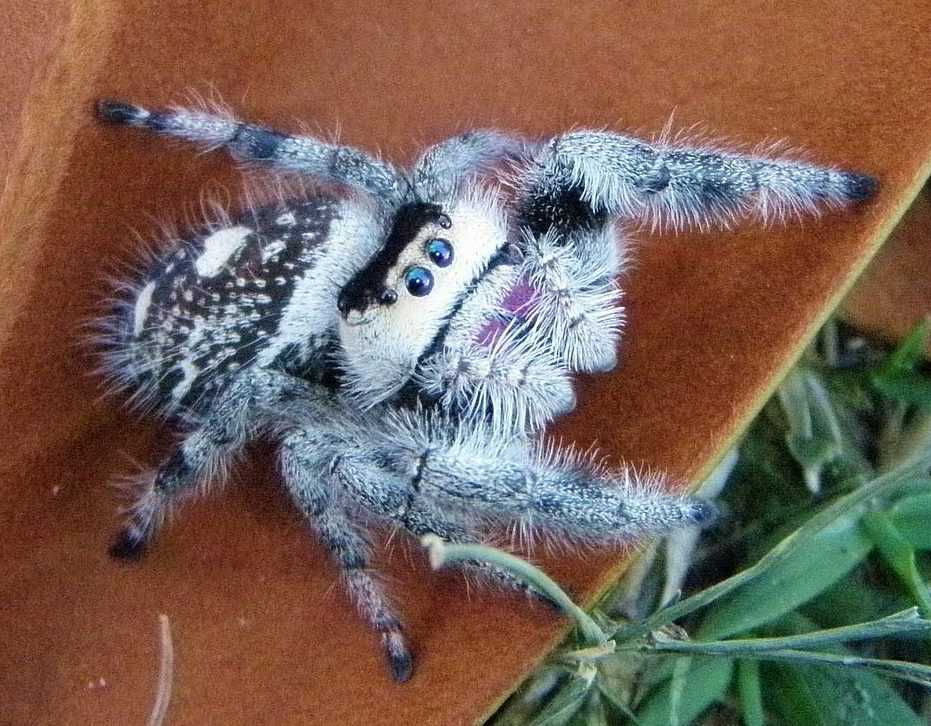
Despite their adaptability to various environments, the female regal jumping spider faces threats to its habitat due to human activities such as urbanization and habitat destruction. Deforestation and the use of chemical pesticides in gardens and agricultural areas also pose risks to their survival.
Conservation efforts are essential to protect the habitats of these unique spiders. Raising awareness about their importance in maintaining ecological balance and advocating for their protection is crucial. Additionally, promoting sustainable practices that minimize habitat destruction and the use of harmful pesticides is vital for their long-term survival.
The female regal jumping spider has a distinct habitat and distribution pattern, primarily found in the southeastern United States. Its ability to adapt to different environments and habitats is remarkable. Efforts to protect their habitats and increase awareness about the importance of these spiders are necessary for their conservation and continued existence in the wild.
The Natural Environment and Global Range of the Female Regal Jumping Spider
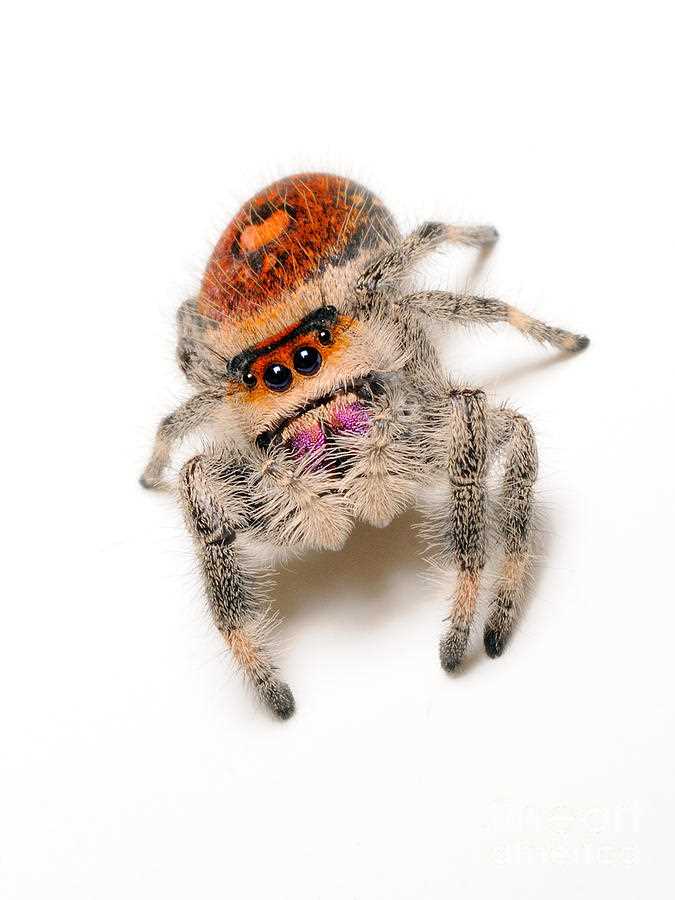
Appearance, Behavior, and Hunting Techniques
The female regal jumping spider is characterized by its vibrant colors and intricate patterns, which vary depending on the species and geographical location. These spiders are typically small in size, measuring only a few centimeters in length. They have eight legs and a compact body that allows them to move swiftly and with agility.
Habitat and Distribution
The female regal jumping spider can be found in a variety of habitats, including grasslands, forests, and gardens. They prefer areas with plenty of vegetation and places to hide, as well as an abundance of prey. These spiders are adaptable and can survive in both hot and cold climates, although they are more common in temperate zones.
Life Cycle and Reproduction
The life cycle of the female regal jumping spider begins with the mating season, which occurs during the warmer months. The males perform intricate courtship displays to attract a female mate. Once mating is successful, the female will lay her eggs in a protective sac, which she carries with her wherever she goes. The female regal jumping spider exhibits exceptional maternal care, ensuring the safety and survival of her offspring.
Diet and Feeding Habits
Prey Selection and Feeding Behavior
The Life Cycle and Reproduction of Female Regal Jumping Spider
1. Juvenile Stage
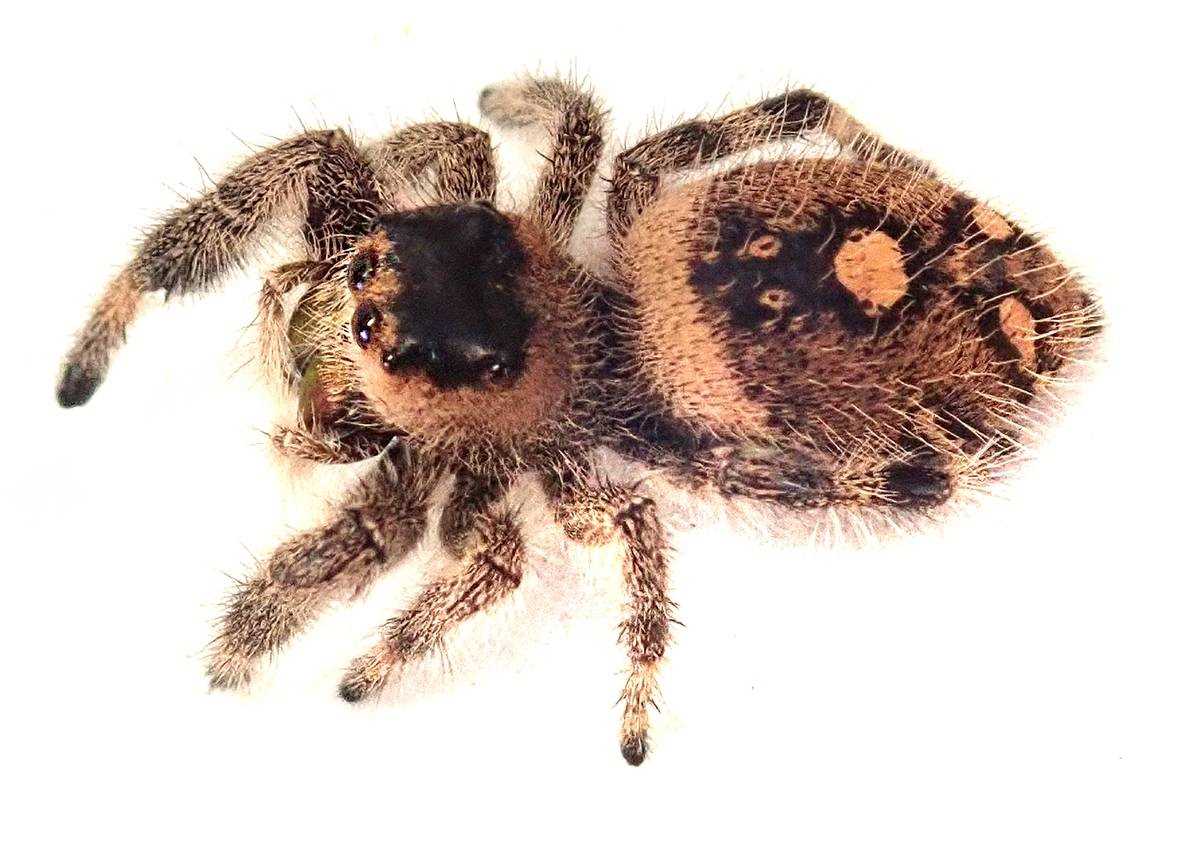
2. Maturation
3. Reproduction
Once mature, the female regal jumping spider is ready to reproduce. During the mating season, males perform elaborate courtship rituals to attract a female. These rituals involve intricate dance-like movements and visual displays.
After mating, the female regal jumping spider produces an egg sac. This sac is carefully guarded by the female, who carries it with her wherever she goes. The spider spins a silken chamber to provide protection for the eggs and keeps the sac securely attached to her abdomen.
4. Maternal Care
The female regal jumping spider exhibits remarkable maternal care. She diligently protects the egg sac from predators and environmental threats. The female spider carries the egg sac until the eggs hatch, ensuring a safe and favorable environment for the developing spiderlings.
5. Spiderlings
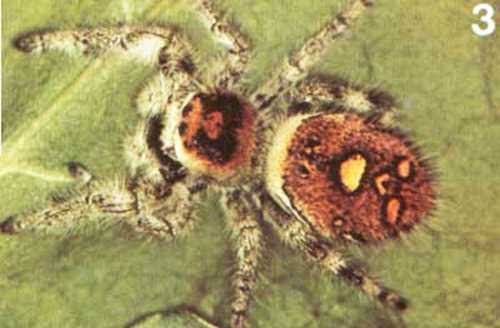
Once the eggs hatch, tiny spiderlings emerge from the sac. At this stage, they resemble miniature versions of the adult female regal jumping spider. The spiderlings disperse, and each begins its own journey of growth and survival.
During the early stages of their life, spiderlings rely on instinct and their innate abilities to catch prey and evade predators. The female regal jumping spider does not provide direct care for her offspring once they leave the sac.
This life cycle and reproduction process showcases the remarkable adaptability and survival instincts of the female regal jumping spider. From humble beginnings as a tiny hatchling to a skilled predator, this spider undergoes a fascinating journey of growth and reproduction.
Mating rituals and maternal care of female jumping spiders
Female jumping spiders display fascinating mating rituals and exceptional maternal care. These behaviors are crucial for successful reproduction and the survival of their offspring.
During mating, the female jumping spider plays an active role in choosing a mate. She evaluates potential mates based on various factors, including size, strength, and the quality of their courtship displays. Once a suitable mate is chosen, the female initiates the mating process.
The mating ritual involves intricate courtship dances, which vary between different species of jumping spiders. These dances often include elaborate leg and body movements, vibrations, and visual displays. The male must perform these displays successfully to win the female’s trust and acceptance.
After mating, the female jumping spider shows exceptional maternal care. Unlike many other spider species, she does not abandon her eggs but instead constructs a protective silk cocoon in which to lay them. The female guards the eggs vigilantly, ensuring their safety from potential predators and environmental threats.
Once the spiderlings hatch, the female continues to demonstrate remarkable maternal care. She remains with her offspring, providing them with food, protection, and guidance. The spiderlings climb onto the mother’s back, hitching rides wherever she goes, allowing them to learn from her behavior and develop essential skills for survival.
This extensive maternal care is essential for the survival and success of the spiderlings. The mother jumping spider ensures that her offspring receive the necessary nutrients and protection during their early stages of life.
Female jumping spiders are a testament to the remarkable behaviors and adaptations found in the animal kingdom. Their intricate mating rituals and exceptional maternal care highlight the complexity and beauty of nature.
Diet and Feeding Habits of Female Jumping Spiders
Female jumping spiders have unique dietary preferences and feeding habits that contribute to their survival and success as hunters. These spiders belong to the Salticidae family, which is known for its excellent eyesight and agile movements.
Prey Selection:
The diet of female jumping spiders primarily consists of insects and other small arthropods. They have a particular preference for flies, beetles, ants, and caterpillars. These spiders are opportunistic hunters, meaning they will attack any suitable prey that comes within striking distance, regardless of its species.
Hunting Behavior:
Female jumping spiders employ a combination of stalking and ambushing techniques to capture their prey. They use their excellent eyesight to detect movement and locate potential prey items. Once they spot a suitable target, they will silently approach it, keeping a safe distance until they are ready to strike.
When the moment is right, the female spider will swiftly pounce on her prey with incredible precision and speed. They immobilize their victims by injecting venom, paralyzing them instantly. This ensures that the prey remains alive and fresh until the spider is ready to consume it.
Feeding Process:
After capturing their prey, female jumping spiders use their sharp fangs to pierce the body of the victim and inject digestive enzymes. These enzymes break down the internal tissues of the prey, effectively turning it into a liquid. The spider then uses its sucking mouthparts to consume the liquefied contents of the prey, leaving only the indigestible parts behind.
Due to their small size, female jumping spiders typically do not require a large amount of food to sustain themselves. However, they must feed regularly to maintain their energy levels and reproductive abilities. The frequency of their feeding depends on various factors, including the availability of prey, temperature, and the spider’s reproductive status.
The Feeding Behavior of the Regal Jumping Spider
Diet:
The diet of the regal jumping spider primarily consists of small insects, including flies, ants, beetles, and other spiders. The spider is an opportunistic predator and will catch any prey that comes within its range.
Prey Selection:
When selecting its prey, the regal jumping spider relies on its exceptional vision and agility. It uses its acute eyesight to spot potential targets from a distance, and then carefully stalks and approaches them.
The spider shows a preference for small, slow-moving insects that are easier to catch and subdue. However, it is not limited to just these insects and will also go after larger prey if the opportunity arises.
Feeding Behavior:
Once the regal jumping spider successfully captures its prey, it quickly immobilizes it by injecting venom through its fangs. The venom paralyzes the prey, making it easier for the spider to handle.
Unlike some other spider species, the regal jumping spider does not wrap its prey in silk or create a web to hold it. Instead, it directly feeds on the prey at the capture site.
The spider uses its sharp fangs to pierce the body of its prey and suck out the body fluids. It consumes the soft tissues, leaving behind only the exoskeleton and other indigestible parts.
This feeding behavior allows the regal jumping spider to extract the necessary nutrients quickly and efficiently from its prey.
The regal jumping spider’s feeding habits play a crucial role in its overall survival and reproductive success. Its ability to catch and consume a variety of prey ensures a sufficient intake of nutrients and energy.

I’m Lena Adams—a product of an unconventional upbringing in the African wilderness. My father, a daring explorer of African wildlife, sparked my fascination with reptiles, a passion that intertwined with the tragic loss of my mother during an expedition, leaving an indelible mark on my life. Driven to understand the creatures that captivated my parents, I embarked on my journey, sharing insights about reptiles, frogs, and lizards on my website. Through my explorations and conservation efforts, I honour my family’s legacy while seeking connections—to the creatures, nature, and the mother whose presence I yearn to understand.
